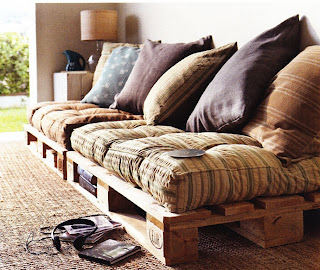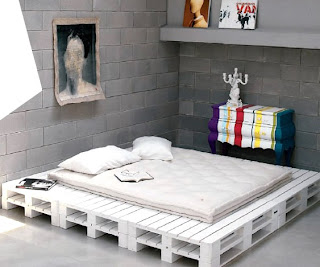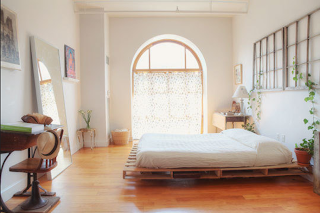Colors and our environments
The primary colors are red, blue, and yellow. All the other colors are combinations of these colors in certain proportions, lied is the physical color and is the color of all physical energy. The various shades of red have their various significations, but, generally speaking, red is the physical color.
Red is also the color of the will. Where ever the will is expressed, it assumes the red color because Will is the out-flowing or manifesting principle, the extension or expression of the self into manifestation. Therefore it must express itself in and through the physical; consequently, it becomes red in color. Red has a stimulating effect. The disturbing influence of red is well illustrated by the expression "painting the town red," indicating recklessness and destruction. It is also the fire of life, the force that begins life.
Red is associated with high energy and power. It is the color our eyes are drawn to first in a room, so a little can go a long way. Red signals courage, ambition and strength. It promotes alertness and speed, and connects us to our physical self. Red may help instill confidence, get us going when we need to be active or task-oriented, and can help as an appetite stimulant. When there is too much red present, or if someone is sensitive to reds, they may experience feelings of irritation, anger or hostility. Often, red is best suited as an accent color instead of the primary color in decor.
Orange is a warm, inviting, and joyful color. It invokes feelings of sociability, enjoyable connection, and happiness. It has an emotionally strong presence, and promotes extroverted behavior - a fantastic color to use in gathering spaces to promote interaction and relationship building. Because orange contains red, it can also be overused. Too much orange (or an orange that is too bright or intense) can create overwhelming, irritating or frustrating feelings.
The third primary color is yellow and it is the color of the mental plane. Everything vibrating on the mental octave is yellow. The darker the yellow, the more gross and material is the character of the thought; the lighter it becomes, the more spiritual it is. The clearer the yellow is, the more purity of thought. The brighter the yellow, the more brilliancy of mind is indicated. Yellow or orange symbolize the highest function and power of our nature and preeminently typify the "scientific" temperament. Yellow is a nerve tonic. It is the climax of luminosity, and symbolizes sunlight itself. It produces the feeling of joy and gaiety. Yellow is the color of optimism, brightness, cheery attitude and mental clarity. It promotes creative, clear, upbeat thinking and decision making. Yellow can be helpful in easing depression and encouraging laughter. Studies have shown that over-exposure to yellow, especially intense and deep yellows, can increase irritability, crying, hyperactivity, and can shorten tempers in babies and children (as well as adults).
Green is the color of action. It is expressed by minor chords, and is the positive expression of the inner being as expressed through action. Unselfish action—action which is purely altruistic in its character, which has no relation whatever to the individual—is a clear emerald green, and the nearer this approaches to the spiritual the paler it becomes. Green has a quieting and soothing effect. It is the color of nature and suggests life. It checks mental activity and suggests sleep. Green is a tremendously pleasing color. It has many positive qualities — invoking renewal, balance, refreshment and peace – which provides a calming influence and stress reducer. An excellent way to bring green into your home spaces is with indoor houseplants or herb gardens. While there is not a strongly negative aspect to too much green, it can promote laziness and lack of initiative if overused.
The second primary color is blue, the color of emotion. All energy vibrating on the higher octave is either blue or red according as it is positive or negative—blue being the negative, feminine, or magnetic side of matter and red the positive, masculine, or radiant side. The bluer the matter may be, the more magnetic it is, while the redder it may be the more electrical it is. Will and Desire are thus the two poles of etheric matter—Will being red, Desire being blue. Blue suggests space, vastness. It is depressing and chilling. One who is continually in a blue environment will sooner or later have the "blues." It is a melancholy color. Blue promotes rest and calm and is a very popular color (the majority of people will respond that their favorite color is blue). Blue can be very effective to help ward off insomnia and promote a deep relaxing sleep. It can help balance hyperactivity in children, and promotes imagination and intuitive thinking. While blue can often be tolerated in higher amounts than other colors, it is a cool color, and too much blue can shift into feelings of apathy, pessimism, or separation from others. Balancing blues with a warmer, more relational color is a great idea for gathering spaces in a home.
Indigo blue is the color of occultism. The dark indigo partakes of the element of screen, while the pure indigo is emblematic of pure occultism.
Violet is the color of magic because it is so far above the ordinary rate of vibration that it has the power of neutralizing and even transforming those rates into its own, thus giving the power of alchemy. Violet is magnetic and cooling. Violet is often the favorite color of adolescent girls, it stimulates the problem solving areas in our brain, and it promotes creativity, intuition and artistic ability. In design, violet communicates richness and sophistication. Overuse of violet may result in feelings of insecurity or suppression of emotions.
Purple being blue mixed with red, the positive aspect of emotion, is the color of mastership, and indicates the master.
Lavender, which is a great deal of white mixed with purple, indicates the master on the astral plane, but merging toward the spiritual.
White is really the combination of all the seven colors. They are all found to unite in forming the white ray. The prism has the power of breaking up the white light into seven prismatic rays, therefore white light is really the combination of those rays. Pure white is unity. It is in fact the very essence of balance. It is the star of hope that typifies cleanliness and symbolizes power. It is the language of knowledge, expression, and spirituality. Virgin white not only signifies cleanliness, but purity and naturally, the mind is consciously as well as unconsciously affected by it.
Black is the reverse of white. White indicates the spirit. Black indicates extreme materiality; not materiality in the sense of physical substance, but materiality as the antithesis of spirit. Black indicates the disintegration which leads to annihilation. Black is repressing, depressing, and suppressing. It represents the negative conditions of gloom, fear, error, disease, ignorance, pessimism, and hopelessness. Black typifies the universal negative in which all color is hid, absorbed, and is emblematic of death, oblivion, and annihilation.
Scarlet is the color of anger, the color which the astral body assumes when it is in an intensely angry condition. Anger is really the forcible action of the will moving outward in a very positive manner. This is what produces the state of anger.
The color of ether is pink, although its vibration is so intense that very few are able to see the vibration; but ether is always pink. Crimson is the color of affection and human feeling. It is the self-relative color, because our affection is given to persons on account of their particular relation to us. Affection is purely a physical and animal feeling.
Rose is the color of life, and as we approach the physical it is more red. As life is brought under the influence of the emotions, it takes on whatever color is found, blended with this red or rose color.
Brown is, in a sense, a mystical color, in that it indicates the presence of white, red, and black in certain combinations. As the shade is, so will its influence be.
As all the colors are included in the white, so is all matter built up of simpler or elemental substances and all changes are due to distribution and aggregation of the elemental matter. Motion is the primary cause that gives rise to color and all other phenomena in existence. In order to trace the origin and progress of any effect, visible or invisible, the aim must be to determine the movement or movements which brought the phenomena into existence. The principle of vibration permeates the whole science of radiation or motion and may be stated in a general way by saying that a body absorbs waves that are of the same period as those which it emits when it is itself in vibration. The essential condition is therefore that the receiver shall be in the same key or wave length as the sender or origin of the movement. The original wave gives energy to the wave upon which it impinges. While one is gaining energy, the other is losing it and this continues until the process of absorption is completed. This principle applies to light, heat, sound, color, or energy of any kind, where it is distributed by a process of radiation.











































.jpg)



